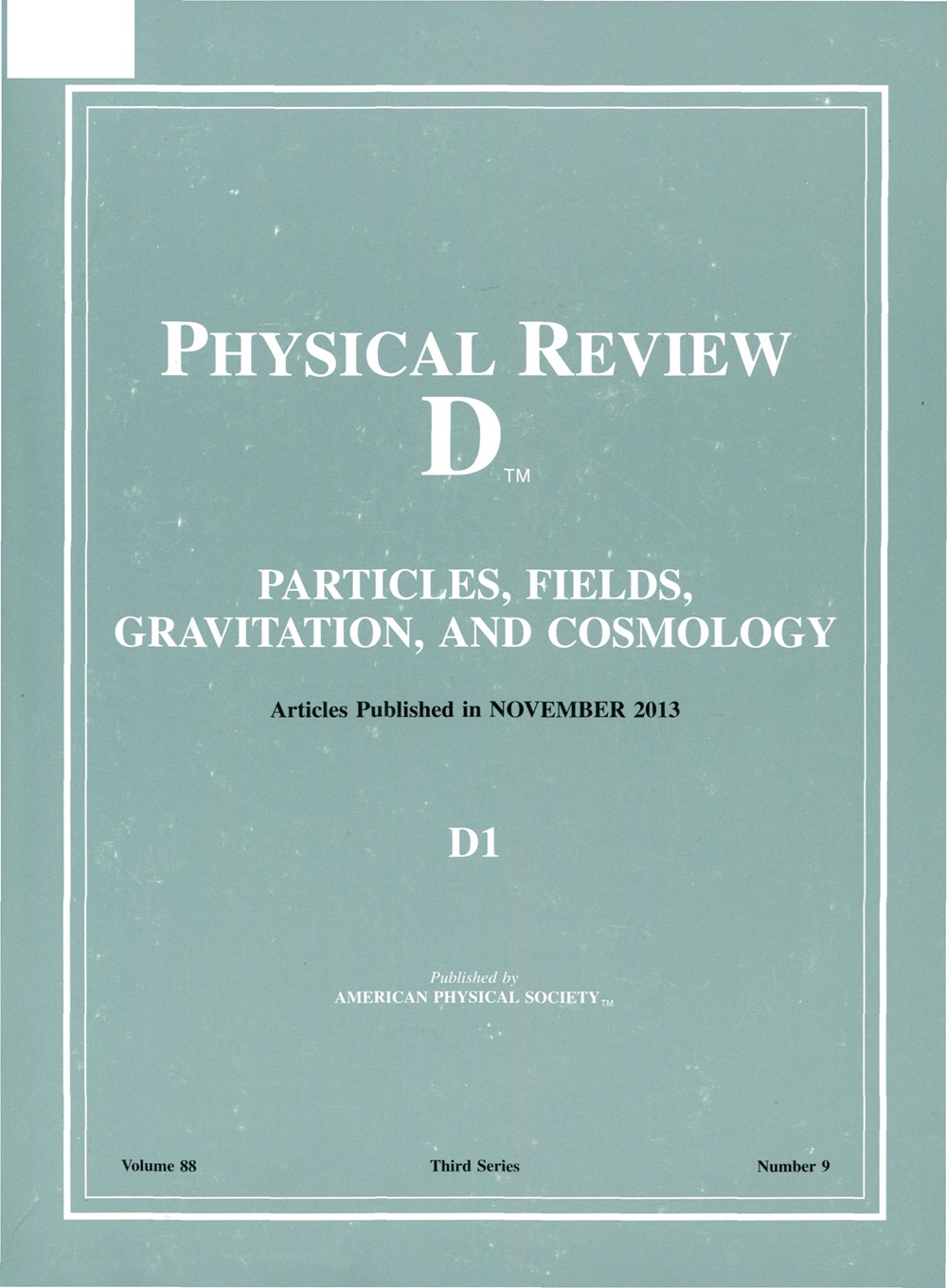通过引力波的频率调制来寻找超轻暗物质
IF 5.3
2区 物理与天体物理
Q1 Physics and Astronomy
引用次数: 0
摘要
超轻玻色子,自然出现在标准模型的合理扩展中,可以构成所有的暗物质。粒子质量接近于最小现象学允许的模型在(亚)星系尺度上表现出相干场构型,其振荡频率与暗物质粒子的基本质量相对应。这些结构的引力场继承了暗物质场的相干振荡,在引力波(和电磁波)上留下了印记,这些引力波来源接近(或在)这些超密度。这是通过外差频率调制实现的,之后可以在引力波探测器中解码。类似的效应发生在超轻玻色子与普通物质的普遍(共形)耦合模型中,由与振荡场的直接相互作用产生。在这项工作中,我们详细探讨了这一现象,并评估了近期干涉仪探测超轻暗物质及其与物质的潜在共形耦合的能力。利用天体物理种群模型,结合宇宙学模拟的结果,我们发现,使用爱因斯坦望远镜/宇宙探索者对银河系中心旋转中子星发出的引力波的观测将特别有效地限制超轻暗物质。2025年由美国物理学会出版本文章由计算机程序翻译,如有差异,请以英文原文为准。
Searching for ultralight dark matter through frequency modulation of gravitational waves
Ultralight bosons, naturally appearing in well-motivated extensions to the Standard Model, can constitute all the dark matter. Models with particle mass close to the smallest phenomenologically allowed exhibit coherent field configurations at (sub)galactic scales, oscillating at a frequency corresponding to the fundamental mass of the dark matter particle. The gravitational field of these structures inherits the dark matter field’s coherent oscillations, leaving an imprint on gravitational (and electromagnetic) waves sourced close to (or in) such overdensities. This happens via a heterodyning frequency modulation, which can later be decoded in a gravitational-wave detector. An analogous effect occurs in models with universal (conformal) couplings of ultralight bosons with ordinary matter, generated by the direct interaction with the oscillating field. In this work, we explore this phenomenon in detail and assess the capability of near-future interferometers to probe ultralight dark matter and its potential conformal couplings to matter. Using astrophysical population models, together with results from cosmological simulations, we find that the observation of gravitational waves from spinning neutron stars at the Galactic Center with the Einstein Telescope/Cosmic Explorer would be particularly effective in constraining ultralight dark matter. Published by the American Physical Society 2025
求助全文
通过发布文献求助,成功后即可免费获取论文全文。
去求助
来源期刊

Physical Review D
物理-天文与天体物理
CiteScore
9.20
自引率
36.00%
发文量
0
审稿时长
2 months
期刊介绍:
Physical Review D (PRD) is a leading journal in elementary particle physics, field theory, gravitation, and cosmology and is one of the top-cited journals in high-energy physics.
PRD covers experimental and theoretical results in all aspects of particle physics, field theory, gravitation and cosmology, including:
Particle physics experiments,
Electroweak interactions,
Strong interactions,
Lattice field theories, lattice QCD,
Beyond the standard model physics,
Phenomenological aspects of field theory, general methods,
Gravity, cosmology, cosmic rays,
Astrophysics and astroparticle physics,
General relativity,
Formal aspects of field theory, field theory in curved space,
String theory, quantum gravity, gauge/gravity duality.
 求助内容:
求助内容: 应助结果提醒方式:
应助结果提醒方式:


